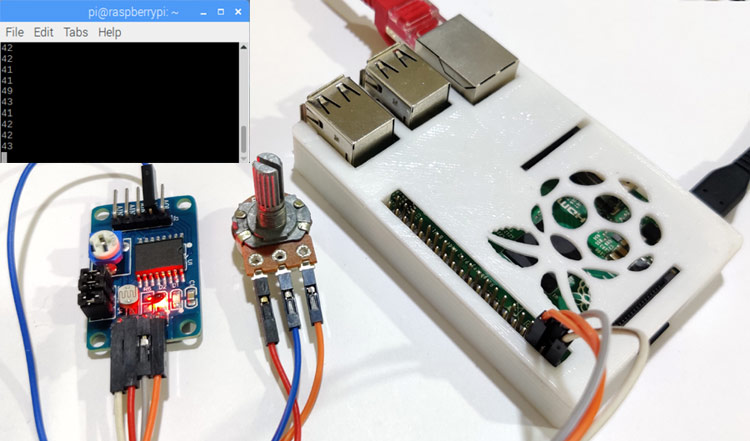

- #Diy analog to digital converter how to#
- #Diy analog to digital converter Pc#
- #Diy analog to digital converter plus#
In the worst case with a bare 9 V AC supply (which is possible, The same dynamic range as with a regulated power supply. Rectified 9 V transformer (i.e., without buffer capacitor) The output signal so that the ADCs' dynamic range is not decreased Only very little hum from unregulated power supplies remains in Due to the ADCs' high power supply rejection ratio I use regulated power supplies even though unregulated onesĪre ok, too. The standard and 210 mA for the "Flagship" version. The current consumption is about 180 mA for The nominal power supply is 12 V DC, but up to 15 VĪre allowed. Higher dynamic range than with the standard chip-set is achieved.įor more measurements I made on the previous prototypes read More expensive ADC-IC which the manufacturer calls his "Flagship"Īnd better (and more expensive) op-amps. Compared to the former standard version, it consists of a significantly Meanwhile I offer the AD24QS in the "Flagship" version only, i.e., "Flagship" is no longer an option but the new standard version.
#Diy analog to digital converter plus#
(1.23 V RMS) plus a reasonable headroom of e.g. Should be reduced to the standard studio level of +4 dBu When the balanced XLR input option is used, the input sensititvity The preamplifiers are dimensioned for an input sensitivity
#Diy analog to digital converter how to#
Read here about the DA2USB and how to combine it with the AD24QS Input Levels and Other Technical Data Thus it is a perfect completion for the ADCs.
#Diy analog to digital converter Pc#
Now I can offer the DA2USB, a driverless USB interface for transferring digital audio signals into a PC with up to 192 kHz / 24 bit. It works on the workbench up to 192 kHz without any problems.Īnyhow, I do not recommend to use it for 192 kHz. PLT133) is specified up to slightly more than 96 kHz only, though The optical output device (the obsolete TOTX177PL or its replacement Its own digital audio transformer can be connected externally.

balanced (XLR- or AES3-) digital audio output with The RCA output is galvanicallyĭecoupled by a digital audio transformer. Digital Audio Outputsīoth digital audio outputs, the optical and the unbalanced As options, a gain switch canĮasily be connected externally as well as balanced XLR inputsĪnd a selector switch between RCA and XLR inputs. Have a sensitivity matching the usual CD or DVD player output Analog InputsĬonnections are made on the rear.

On the front lights up, when at least one of the channels is overdriven. Switch would prevent access to the consumer format. With the options "no copyright asserted", "copyrightĪsserted, original version" and "copyright asserted,Ĭopied version". Where you can select 44.1 kHz or 48 kHz only, but each Positions A - F are indicated as "Consumer Format", The first 10 sample rates, with the digital audio signal indicatedĪs "Professional Format", are selected in positions Of 10 different sample rates up to 192 kHz, set with the The difference between revisions 3 and 4 is a slight change in the layout. Note: From revision 4 on only the "Flagship" version is still available. The data above is measured at my samples and cannot be guaranteed, Option "Flagship" chip-set: 12 V DC, 210 mA Standard version: 12 V DC, 180 mA approx. Option: External AES3 XLR balanced, 110 ΩĤ4.1 kHz: 275 µs (yes, less than 48 kHz) Option "Flagship" chip-set: 115 (117) dB approx.ġ x on-board optical (Toslink, up to 96 kHz only) The AD24QS is a high quality Audio Analog to Digital ConverterĪvailable as kit for DIY (Do It Yourself).


 0 kommentar(er)
0 kommentar(er)
